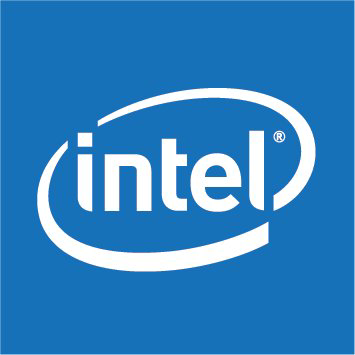Harry Kane helped fire England to the 2026 FIFA World Cup finals after a 5-0 win against Latvia on a night Thomas Tuchel was teased by fans.
Captain Kane returned from injury to score twice in the first-half amid a remarkable start to the season,…

Harry Kane helped fire England to the 2026 FIFA World Cup finals after a 5-0 win against Latvia on a night Thomas Tuchel was teased by fans.
Captain Kane returned from injury to score twice in the first-half amid a remarkable start to the season,…

Born in Palermo, Sicily, Giorgio Rizzo spent his childhood curious about the natural world. “I have always been fascinated by nature and how plants and animals can adapt and survive in extreme environments,” he says….

This article first appeared on GuruFocus.
Intel (INTC, Financials) is making another push into the artificial intelligence chip market with its upcoming data center GPU, code-named Crescent Island, which customers will begin testing in the…

Simple Life is getting smarter.
What’s happening: The London-based behavioral coaching company secured a $35M Series B led by actor Kevin Hart’s HartBeat Ventures to advance AI-powered plans.
Lean machine. Counting 800K…

YouTube is updating the look of the video player to be “cleaner and more immersive” beginning this week. “This includes updated controls and new icons to make the viewing experience more visually satisfying while obscuring less content,”

By Joseph Adinolfi
The revival of the U.S.-China trade war has ended a streak of summer calm that had brought about the lowest volatility since January 2020
The stock market’s “fear gauge” is back above its long-term average.
After one of the quietest summers for the stock market in years, Wall Street’s fear gauge has once again shot higher as investors fret that a trade standoff between the U.S. and China could escalate further.
The Cboe Volatility Index VIX, better known as the VIX, or Wall Street’s “fear gauge,” traded as high as 22.76 on Tuesday, its highest intraday level since May 23, when it traded as high as 25.53, according to Dow Jones Market Data. By the time the market closed, the VIX had moved well off its earlier highs. The index ended the day above 20, a level with some significance.
Since the VIX’s inception in the early 1990s, its long-term average sits just below 20. As a result, investors tend to see this level as the line in the sand between a relatively calm market, and one that is starting to look a bit more panicked.
The level of the VIX is based on trading activity in options contracts tied to the S&P 500 SPX that are due to expire in roughly one month. It is seen as a proxy for how worried traders are about the possibility that stocks could be due for a nosedive. After all, volatility tends to rise more quickly when the market is falling.
A summer lull
Looking back, there were signs that investors were beginning to feel a bit too complacent.
Stocks trundled higher all summer with few interruptions. This placid trading ultimately sent the three-month realized volatility for the S&P 500 to its lowest level since January 2020 last week, according to FactSet data and MarketWatch calculations.
Realized volatility is a calculation that measures how volatile a given index or asset has been in the recent past. The VIX, which measures implied volatility, attempts to gauge how volatile investors expect markets will be in the immediate future.
For a while, the VIX trended lower alongside realized volatility for the S&P 500. But around Labor Day, the two started to diverge.
This could mean a couple of different things, according to portfolio managers who spoke with MarketWatch. The first is that investors increasingly preferred to bet on further upside in the stock market using call options instead of actual shares. Call options on the S&P 500 will deliver a payoff if the index rises above a predetermined level before a given time, which is known as the expiration date.
It might also mean that some traders were scooping up put options, which act like a form of portfolio insurance. Wary of myriad risks that could upset the apple cart following a record-setting rebound earlier in the year, some investors may have preferred to hedge their downside risk, while holding on to their stocks, so as not to miss out on any further gains.
Signs that the market might be bracing for some upcoming turbulence first started to emerge in late September. Between Sept. 29 and Oct. 3, the S&P 500 and the VIX rose simultaneously for five straight sessions. That hadn’t happened since at least 1996, according to an analysis from Carson Group’s Ryan Detrick.
Seeing both the VIX and S&P 500 trend higher hinted that the market’s streak of calm might soon be coming to an end, said Michael Kramer, portfolio manager at Mott Capital Management.
“The tinder was there for something like Friday to occur,” said Mike Thompson, co-portfolio manager at Little Harbor Advisors.
“You just needed that spark to trigger it,” Mott Capital’s Kramer said.
While the U.S.-China trade tensions remain far from settled, Thompson and his brother, Matt Thompson, also a co-portfolio manager at Little Harbor Advisors, are keeping an eye out for any indication that a bigger burst of volatility might lie ahead.
Investors have largely blamed the selloff for the revival of trade tensions between the U.S. and China. On Friday, President Donald Trump threatened 100% tariffs on all Chinese goods imported into the U.S. in retaliation for Beijing stepping up export controls on rare earth metals.
Then on Tuesday, Beijing sanctioned U.S. subsidiaries of a South Korean shipping firm, sparking a global stock-market selloff that had largely reversed by the time the closing bell rang out on Wall Street.
But according to the Thompson brothers, the U.S.-China tariff dance has started to feel a little too familiar for it to be a real cause for concern. Investors appear to be catching on to the pattern of escalation, followed immediately by de-escalation, as each side vies for maximum leverage.
A more plausible threat to market calm, in their view, would be the ructions in the credit market. On Tuesday, JPMorgan Chase & Co. (JPM) Chief Executive Jamie Dimon warned about the potential for more credit problems after the bank lost money on a loan to bankrupt subprime auto lender Tricolor. Trouble in the space could get worse after a long period where conditions in the credit market were relatively favorable.
On Friday, BlackRock (BLK) and other institutional investors asked for their money back from Point Bonita Capital, a fund managed by the investment bank Jefferies (JEF), after the bankruptcy of auto parts supplier First Brands Group saddled the fund with big losses.
“We’re keeping an eye out for whether there is another shoe to drop,” Matt Thompson said.
U.S. stocks were on track to finish mostly higher on Tuesday, until Trump dropped a Truth Social post accusing China of a “Economically Hostile Act” for refusing to purchase soybeans from American farmers. That caused the S&P 500 to finish 0.2% lower, while the Nasdaq Composite COMP ended down 0.8%. Of the three major U.S. indexes, only the Dow Jones Industrial Average DJIA managed to finish higher. Meanwhile, the Russell 2000 RUT, an index of small-cap stocks, quietly notched another record closing high.
-Joseph Adinolfi
This content was created by MarketWatch, which is operated by Dow Jones & Co. MarketWatch is published independently from Dow Jones Newswires and The Wall Street Journal.
(END) Dow Jones Newswires
10-14-25 1642ET
Copyright (c) 2025 Dow Jones & Company, Inc.

As Meta focuses on achieving net zero emissions in 2030, understanding the carbon footprint of server hardware is crucial for making informed decisions about sustainable sourcing and design. However, calculating the precise carbon footprint is challenging due to complex supply chains and limited data from suppliers. IT hardware used in our data centers is a significant source of emissions, and the embodied carbon associated with the manufacturing and transportation of this hardware is particularly challenging to quantify.
To address this, we developed a methodology to estimate and track the carbon emissions of hundreds of millions of components in our data centers. This approach involves a combination of cost-based estimates, modeled estimates, and component-specific product carbon footprints (PCFs) to provide a detailed understanding of embodied carbon emissions. These component-level estimates are ranked by the quality of data and aggregated at the server rack level.
By using this approach, we can analyze emissions at multiple levels of granularity, from individual screws to entire rack assemblies. This comprehensive framework allows us to identify high-impact areas for emissions reduction.
Our ultimate goal is to drive the industry to adopt more sustainable manufacturing practices and produce components with reduced emissions. This initiative underscores the importance of high-quality data and collaboration with suppliers to enhance the accuracy of carbon footprint calculations to drive more sustainable practices.
We leveraged AI to help us improve this database and understand our Scope 3 emissions associated with IT hardware by:
For this work we used various AI methods to enhance the accuracy and coverage of Scope 3 emission estimates for our IT hardware. Our approach leverages the unique strengths of both natural language processing (NLP) and large language models (LLMs).
In our first use case (Identifying similar components with AI), we employed various NLP techniques such as Term Frequency-Inverse Document Frequency (TF-IDF) and Cosine similarity to identify patterns within a bounded, relatively small dataset. Specifically, we applied this method to determine the similarity between different components. This approach allowed us to develop a highly specialized model for this specific task.
LLMs are pre-trained on a large corpus of text data, enabling them to learn general patterns and relationships in language. They go through a post-training phase to adapt to specific use cases such as chatbots. We apply LLMs, specifically Llama 3.1, in the following three different scenarios:
Unlike the first use case, where we needed a highly specialized model to detect similarities, we opted for LLM for these three use cases because it leverages general human language rules. This includes handling different units for parameters, grouping synonyms into categories, and recognizing varied phrasing or terminology that conveys the same concept. This approach allows us to efficiently handle variability and complexity in language, which would have required significantly more time and effort to achieve using only traditional AI.
When analyzing inventory components, it’s common for multiple identifiers to represent the same parts or slight variations of them. This can occur due to differences in lifecycle stages, minor compositional variations, or new iterations of the part.
PCFs following the GHG Protocol are the highest quality input data we can reference for each component, as they typically account for the Scope 3 emissions estimates throughout the entire lifecycle of the component. However, conducting a PCF is a time-consuming process that typically takes months. Therefore, when we receive PCF information, it is crucial to ensure that we map all the components correctly.
PCFs are typically tied to a specific identifier, along with aggregated components. For instance, a PCF might be performed specifically for a particular board in a server, but there could be numerous variations of this specific component within an inventory. The complexity increases as the subcomponents of these items are often identical, meaning the potential impact of a PCF can be significantly multiplied across a fleet.
To maximize the utility of a PCF, it is essential to not only identify the primary component and its related subcomponents but also identify all similar parts that a PCF could be applied to. If these similar components are not identified their carbon footprint estimates will remain at a lower data quality. Therefore, identifying similar components is crucial to ensure that we:
To achieve this, we employed a natural language processing (NLP) algorithm, specifically tailored to the language of this dataset, to identify possible proxy components by analyzing textual descriptions and filtering results by component category to ensure relevance.
The algorithm identifies proxy components in two distinct ways:
Meta’s Net Zero team reviews the proposed proxies and validates our ability to apply them in our estimates. This approach enhances the accuracy and consistency of component data, ensures that high-quality PCF data is effectively utilized across similar components, and enables us to design our systems to more effectively reduce emissions associated with server hardware.
When PCFs are not available, we aim to avoid using spend-to-carbon methods because they tie sustainability too closely to spending on hardware and can be less accurate due to the influence of factors like supply chain disruptions.
Instead, we have developed a portfolio of methods to estimate the carbon footprint of these components, including through parameterized modeling. To adapt any model at scale, we require two essential elements: a deterministic model to scale the emissions, and a list of data input parameters. For example, we can scale the carbon footprint calculation for a component by knowing its constituent components’ carbon footprint.
However, applying this methodology can be challenging due to inconsistent description data or locations where information is presented. For instance, information about cables may be stored in different tables, formats, or units, so we may be unable to apply models to some components due to difficulty in locating input data.
To overcome this challenge, we have utilized large language models (LLMs) that extract information from heterogeneous sources and inject the extracted information into the parameterized model. This differs from how we apply NLP, as it focuses on extracting information from specific components. Scaling a common model ensures that the estimates provided for these parts are consistent with similar parts from the same family and can inform estimates for missing or misaligned parts.
We applied this approach to two specific categories: memory and cables. The LLM extracts relevant data (e.g., the capacity for memory estimates and length/type of cable for physics-based estimates) and scales the components’ emissions calculations according to the provided formulas.
We utilize our centralized component carbon footprint database not only for reporting emissions, but also to drive our ability to efficiently deploy emissions reduction interventions. Conducting a granular analysis of component-level emissions enables us to pinpoint specific areas for improvement and prioritize our efforts to achieve net zero emissions. For instance, if a particular component is found to have a disproportionately high carbon footprint, we can explore alternative materials or manufacturing processes to mitigate its environmental impact. We may also determine that we should reuse components and extend their useful life by testing or augmenting component reliability. By leveraging data-driven insights at the component level and driving proactive design interventions to reduce component emissions, we can more effectively prioritize sustainability when designing new servers.
We leverage a bill of materials (BOM) to list all of the components in a server rack in a tree structure, with “children” component nodes listed under “parent” nodes. However, each vendor can have a different BOM structure, so two identical racks may be represented differently. This, coupled with the heterogeneity of methods to estimate emissions, makes it challenging to easily identify actions to reduce component emissions.
To address this challenge, we have used AI to categorize the descriptive data of our racks into two hierarchical levels:
We have developed two classification models: one for “domain” mapping, and another for “component” mapping. The difference between these mappings lies in the training data and the additional set of examples provided to each model. We then combine the two classifications to generate a mutually exclusive hierarchy.
During the exploration phase of the new taxonomy generation, we allowed the GenAI model to operate freely to identify potential categories for grouping. After reviewing these potential groupings with our internal hardware experts, we established a fixed list of major components. Once this list was finalized, we switched to using a strict GenAI classifier model as follows:
This methodology has been presented at the 2025 OCP regional EMEA summit with the goal to drive the industry toward a common taxonomy for carbon footprint emissions, and open source the methodology we used to create our taxonomy.
These groupings are specifically created to aid carbon footprint analysis, rather than for other purposes such as cost analysis. However, the methodology can be tailored for other purposes as necessary.
As we work toward achieving net zero emissions across our value chain in 2030, this component-level breakdown methodology is necessary to help understand our emissions at the server component level. By using a combination of high-quality PCFs, spend-to-carbon data, and a portfolio of methods that leverage AI, we can enhance our data quality and coverage to more effectively deploy emissions reduction interventions.
Our next steps include open sourcing:
We are committed to sharing our learnings with the industry as we evolve this methodology, now as part of a collaborative effort with the OCP PCR group.

Generalized anxiety disorder (GAD) affects approximately 4% of the population [,] and is characterized by persistent and excessive worry that significantly disrupts daily functioning and diminishes quality of life [,]. The…

Newsbrief: Owlcat Games has spun up a dedicated educational resource hub for industry professionals of all experience levels called “GameDevLearningDrop.”
The hub—an unusual initiative for any game studio—gathers a wide variety of game…

ENGLEWOOD, Colo.–(BUSINESS WIRE)–
Liberty Media Corporation (“Liberty Media”) (Nasdaq: FWONA, FWONK, LLYVA, LLYVK) will hold a virtual special meeting of its Series A Liberty Live common stock (“LLYVA”) and Series B Liberty Live common stock (“LLYVB”) holders on Friday, December 5, 2025 at 8:30 a.m. Mountain time. At the special meeting, such stockholders will be asked to consider and vote on a proposal related to Liberty Media’s proposed transaction to separate the Liberty Live Group by means of a redemptive split-off (the “Split-Off”) into a separate public company, Liberty Live Holdings, Inc. (“SplitCo”).
Prior to the completion of the Split-Off, certain assets and liabilities will be reattributed between the Formula One Group and the Liberty Live Group (the “Reattribution”). Additional information regarding the values of the assets and liabilities included in the Reattribution will be provided via press release in connection with the closing of the Split-Off.
Information regarding the Split-Off and matters on which holders of LLYVA and LLYVB are being asked to vote will be available in the definitive proxy materials to be filed by Liberty Media with respect to the special meeting, which are expected to be filed November 4, 2025. Assuming satisfaction of all conditions to closing, the Split-Off is expected to be completed as soon as practicable following the stockholder vote, and we currently expect closing to occur on December 15, 2025.
Additional Special Meeting Details
The special meeting will be held via the Internet and will be a completely virtual meeting of stockholders. LLYVA and LLYVB stockholders of record as of the record date for the special meeting will be able to listen, vote and submit questions pertaining to the special meeting of stockholders by visiting www.virtualshareholdermeeting.com/LMC2025SM. The record date for the special meeting is 5:00 p.m., New York City time, on Thursday, October 9, 2025. Stockholders will need the 16-digit control number that is printed in the box marked by the arrow on the stockholder’s proxy card for the special meeting to enter the virtual special meeting website. A technical support number will become available at the virtual meeting link 10 minutes prior to the scheduled meeting time.
In addition, access to the special meeting will be available on the Liberty Media website. All interested persons should visit https://www.libertymedia.com/investors/news-events/ir-calendar to access the webcast. An archive of the webcast will also be available on this website after appropriate filings have been made with the SEC.
About Liberty Media Corporation
Liberty Media Corporation operates and owns interests in media, sports and entertainment businesses. Those businesses are attributed to two tracking stock groups: the Formula One Group and the Liberty Live Group. The businesses and assets attributed to the Formula One Group (NASDAQ: FWONA, FWONK) include Liberty Media’s subsidiaries Formula 1, MotoGP, Quint and other minority investments. The businesses and assets attributed to the Liberty Live Group (NASDAQ: LLYVA, LLYVK) include Liberty Media’s interest in Live Nation and other minority investments.
Forward-Looking Statements
This communication includes certain forward-looking statements within the meaning of the Private Securities Litigation Reform Act of 1995, including certain statements relating to the Split-Off and Liberty Media’s definitive proxy statement for the special meeting and other matters that are not historical facts. All statements other than statements of historical fact are “forward-looking statements” for purposes of federal and state securities laws. These forward-looking statements generally can be identified by phrases such as “possible,” “potential,” “intends” or “expects” or other words or phrases of similar import or future or conditional verbs such as “will,” “may,” “might,” “should,” “would,” “could,” or similar variations. These forward-looking statements involve many risks and uncertainties that could cause actual results to differ materially from those expressed or implied by such statements, including, without limitation, the satisfaction of conditions to the Split-Off. These forward-looking statements speak only as of the date of this communication, and Liberty Media expressly disclaims any obligation or undertaking to disseminate any updates or revisions to any forward-looking statement contained herein to reflect any change in Liberty Media’s expectations with regard thereto or any change in events, conditions or circumstances on which any such statement is based. Please refer to the publicly filed documents of Liberty Media, including its most recent Forms 10-K and 10-Q, as such risk factors may be amended, supplemented or superseded from time to time by other reports Liberty Media subsequently files with the SEC, for additional information about Liberty Media and about the risks and uncertainties related to Liberty Media’s business which may affect the statements made in this communication.
Additional Information
Nothing in this press release shall constitute a solicitation to buy or an offer to sell shares of common stock of Liberty Media or SplitCo. The proposed offer and issuance of shares of SplitCo common stock in the Split-Off will be made only pursuant to an effective registration statement on Form S-4, including a proxy statement and a notice of meeting and action of Liberty Media and prospectus of SplitCo. LIBERTY MEDIA STOCKHOLDERS AND OTHER INVESTORS ARE URGED TO READ THE REGISTRATION STATEMENT, TOGETHER WITH ALL RELEVANT SEC FILINGS REGARDING THE PROPOSED TRANSACTION, AND ANY OTHER RELEVANT DOCUMENTS FILED AS EXHIBITS THEREWITH, AS WELL AS ANY AMENDMENTS OR SUPPLEMENTS TO THOSE DOCUMENTS, BECAUSE THEY WILL CONTAIN IMPORTANT INFORMATION ABOUT THE PROPOSED TRANSACTION. After the registration is declared effective, the proxy statement/notice/prospectus and other relevant materials for the proposed transaction will be mailed to all holders of Liberty Media’s LLYVA and LLYVB common stock. Copies of these SEC filings will be available, free of charge, at the SEC’s website (http://www.sec.gov). Copies of the filings together with the materials incorporated by reference therein will also be available, without charge, by directing a request to Liberty Media Corporation, 12300 Liberty Boulevard, Englewood, Colorado 80112, Attention: Investor Relations, Telephone: (877) 772-1518.
Participants in a Solicitation
Liberty Media anticipates that the following individuals will be participants (the “Liberty Media Participants”) in the solicitation of proxies from holders of Liberty Media’s LLYVA and LLYVB common stock in connection with the proposed transaction: John C. Malone, Chairman of the Liberty Media Board of Directors, Robert R. Bennett, Chase Carey, Brian M. Deevy, M. Ian G. Gilchrist, Evan D. Malone, Larry E. Romrell, and Andrea L. Wong, all of whom are members of the Liberty Media Board of Directors, and Derek Chang, Liberty Media’s President and Chief Executive Officer and a member of the Liberty Media Board of Directors, Brian J. Wendling, Liberty Media’s Chief Accounting Officer and Principal Financial Officer, and Renee L. Wilm, Liberty Media’s Chief Legal Officer and Chief Administrative Officer. Information regarding the Liberty Media Participants, including a description of their direct or indirect interests, by security holdings or otherwise, can be found under the caption “Security Ownership of Certain Beneficial Owners and Management—Security Ownership of Management” contained in Liberty Media’s proxy statement on Schedule 14A (the “Proxy Statement”), which was filed with the SEC on March 28, 2025 and is available at: https://www.sec.gov/ix?doc=/Archives/edgar/data/0001560385/000110465925029081/tm252442-2_def14a.htm. To the extent that certain Liberty Media Participants or their affiliates have acquired or disposed of security holdings since the “as of” date disclosed in the Proxy Statement, such transactions have been or will be reflected on Statements of Change in Ownership on Form 4 or amendments to beneficial ownership reports on Schedules 13D filed with the SEC, which are available at: https://www.sec.gov/edgar/browse/?CIK=1560385&owner=exclude. Additional information regarding the Liberty Media Participants in the proxy solicitation and a description of their interests is contained in the proxy statement for Liberty Media’s special meeting of stockholders and other relevant materials filed with the SEC in respect of the Split-Off. These documents can be obtained free of charge from the sources indicated above.
View source version on businesswire.com: https://www.businesswire.com/news/home/20251014514078/en/
Liberty Media Corporation
Shane Kleinstein, 720-875-5432
Source: Liberty Media Corporation
Released October 14, 2025